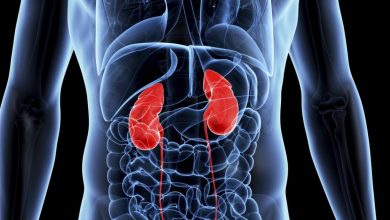In an increasingly interconnected world, effective communication across languages and cultures is essential. However, poor translations can lead to misunderstandings, misinterpretations, and even damaging consequences. To safeguard against the pitfalls of inaccurate translations, it’s crucial to employ strategies that ensure clear, accurate, and culturally sensitive communication. In this article, we will explore ways to protect against poor translations and enhance the quality of cross-linguistic communication.
The Risks of Poor Translations:
1. Miscommunication:
- Poorly translated content can lead to misunderstandings and confusion, hindering the intended message from reaching its target audience.
2. Cultural Insensitivity:
- Incorrect translations may inadvertently convey culturally insensitive or inappropriate messages, potentially causing offense.
3. Loss of Credibility:
- Inaccurate translations can undermine the credibility and professionalism of individuals or organizations, affecting reputation and trust.
Strategies for Ensuring Accurate Translations:
1. Work with Professional Translators:
- Collaborate with qualified and experienced translators who are proficient in both the source and target languages, ensuring accuracy and fluency.
2. Contextual Understanding:
- Provide translators with context, background information, and specific instructions to aid accurate interpretation.
3. Review and Proofreading:
- Implement a thorough review process that includes proofreading by native speakers to catch errors and ensure linguistic and cultural accuracy.
4. Use Translation Tools Wisely:
- Utilize technology and translation tools to assist, but do not solely rely on them. Human expertise is essential for nuanced translations.
5. Maintain Consistency:
- Establish and adhere to consistent terminology and style guidelines, enhancing coherence and uniformity in translated content.
6. Cultural Sensitivity:
- Translators should be culturally aware and sensitive to nuances, idioms, and cultural references to avoid misinterpretations.
7. Contextual Adaptation:
- Ensure that translations are adapted appropriately to the target culture, taking into account linguistic, cultural, and social factors.
8. Localization:
- For marketing and communication purposes, consider localization to tailor content for specific regions or markets.
9. Communication with Translators:
- Maintain open and clear communication with translators, fostering a collaborative approach to achieve accurate results.
10. Continuous Learning: – Stay informed about language trends, cultural shifts, and linguistic nuances to enhance your understanding of languages and translation.
Effective communication hinges on accurate and culturally sensitive translations. By adopting these strategies, individuals, businesses, and organizations can protect themselves against the risks of poor translations and ensure that their messages resonate authentically across languages and cultures. Recognizing the value of skilled translation as a bridge between diverse linguistic landscapes, we can foster meaningful connections, build trust, and navigate the intricacies of global communication with confidence and success.
Key Roles in Adolescent Development: Navigating the Path to Adulthood
Adolescence, a pivotal phase between childhood and adulthood, is marked by rapid physical, emotional, and cognitive changes. During this transformative period, various factors play crucial roles in shaping the development and well-being of adolescents. In this article, we will explore the significant roles that parents, peers, educators, and society at large play in the development of adolescents, highlighting their influence on shaping attitudes, behaviors, and future trajectories.
Parents:
1. Emotional Support:
- Parents provide a secure emotional foundation by offering unconditional love, understanding, and a safe space for adolescents to express their feelings and concerns.
2. Guidance and Boundaries:
- Establishing clear boundaries and providing guidance helps adolescents develop a sense of responsibility, self-discipline, and moral values.
3. Communication:
- Open and effective communication between parents and adolescents fosters trust, mutual respect, and the exchange of ideas and perspectives.
4. Role Modeling:
- Parents serve as role models, influencing adolescents’ attitudes toward relationships, work ethic, and overall values.
Peers:
1. Social Identity:
- Peers contribute to the development of social identity, self-concept, and a sense of belonging, helping adolescents define their place within peer groups.
2. Peer Pressure:
- Peers can exert positive or negative influences on behavior, choices, and decision-making, which can impact an adolescent’s sense of self and well-being.
3. Social Skills:
- Interacting with peers facilitates the development of social skills, empathy, cooperation, and conflict resolution abilities.
Educators:
1. Cognitive Development:
- Educators stimulate cognitive growth by providing challenging academic experiences, critical thinking opportunities, and exposure to diverse subjects.
2. Mentorship:
- Positive relationships with educators can serve as mentorship opportunities, inspiring adolescents to pursue academic and personal goals.
3. Skill Building:
- Educators play a role in fostering skills such as communication, teamwork, time management, and problem-solving, which are vital for success.
Society at Large:
1. Cultural Influences:
- Societal norms, values, and cultural messages shape adolescents’ perceptions of gender roles, self-identity, and their place in society.
2. Media and Technology:
- The media and technology play a significant role in shaping adolescents’ attitudes, behaviors, and worldviews, affecting their mental and emotional well-being.
3. Community Engagement:
- Involvement in community activities, volunteer work, and civic engagement contributes to a sense of responsibility, empathy, and social awareness.
Adolescent development is a multifaceted process influenced by a web of interactions, experiences, and relationships. Parents, peers, educators, and societal influences collectively shape the trajectory of adolescents’ growth, molding their values, skills, and aspirations. By recognizing the pivotal roles each of these factors plays and fostering a supportive and nurturing environment, we can empower adolescents to navigate this transformative phase with confidence, resilience, and a strong foundation for a successful transition to adulthood.


















